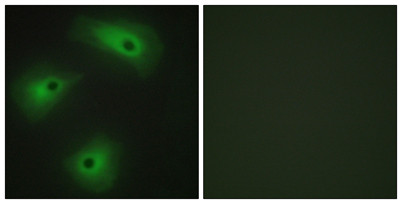Cookie preferences
This website uses cookies, which are necessary for the technical operation of the website and are always set. Other cookies, which increase the comfort when using this website, are used for direct advertising or to facilitate interaction with other websites and social networks, are only set with your consent.
Configuration
Technically required
These cookies are necessary for the basic functions of the shop.
"Allow all cookies" cookie
"Decline all cookies" cookie
CSRF token
Cookie preferences
Currency change
Customer-specific caching
FACT-Finder tracking
Individual prices
Selected shop
Session
Comfort functions
These cookies are used to make the shopping experience even more appealing, for example for the recognition of the visitor.
Note
Show the facebook fanpage in the right blod sidebar
Statistics & Tracking
Affiliate program
Conversion and usertracking via Google Tag Manager
Track device being used

| Item number | Size | Datasheet | Manual | SDS | Delivery time | Quantity | Price |
|---|---|---|---|---|---|---|---|
| ELK-ES6706.50 | 50 µl | - | - |
Request delivery time estimate |
169.00€
|
||
| ELK-ES6706.100 | 100 µl | - | - |
Request delivery time estimate |
283.00€
|
If you have any questions, please use our Contact Form.
You can also order by e-mail: info@biomol.com
Larger quantity required? Request bulk
You can also order by e-mail: info@biomol.com
Larger quantity required? Request bulk
domain:The region spanning the fifth and sixth transmembrane domains probably forms the... more
Product information "Anti-TMEM16A"
domain:The region spanning the fifth and sixth transmembrane domains probably forms the pore-forming region.,function:Acts as a calcium-activated chloride channel. Required for normal tracheal development.,similarity:Belongs to the anoctamin family.,tissue specificity:Broadly expressed with higher levels in liver and skeletal muscle., Protein function: Calcium-activated chloride channel (CaCC) (PubMed:20056604, PubMed:22178883, PubMed:21984732, PubMed:22946059, PubMed:32487539). Plays a role in transepithelial anion transport and smooth muscle contraction. Required for the normal functioning of the interstitial cells of Cajal (ICCs) which generate electrical pacemaker activity in gastrointestinal smooth muscles. Acts as a major contributor to basal and stimulated chloride conductance in airway epithelial cells and plays an important role in tracheal cartilage development. Required for CFTR activation by enhancing endoplasmic reticulum Ca(2+) store release and is also required for CFTR membrane expression (PubMed:28963502). Required for basal and ATP-dependent mucus secretion in airways and intestine, probably by controlling exocytosis of mucus-filled granules by providing Ca(2+) to an apical signaling compartment. Contributes to airway mucus expression induced by interleukins IL3 and IL8 and by the asthma-associated protein CLCA1 and is required for expression of mucin MUC5AC (PubMed:33026825). However, was shown in another study not to be required for MUC5AC expression (PubMed:31732694). Plays a role in the propagation of Ca(2+) waves in Kolliker's organ in the cochlea and contributes to the refinement of auditory brainstem circuitries prior to hearing onset. In vomeronasal sensory neurons, modulates spontaneous firing patterns in the absence of stimuli as well as the firing pattern of pheromone- evoked activity. Responsible for calcium-activated chloride channel activity in type I taste cells of the vallate papillae. Acts as a heat sensor in nociceptive neurons. In dorsal root ganglion neurons, plays a role in mediating non-histaminergic Mas-related G-protein coupled receptor (MRGPR)- dependent itching, acting as a downstream effector of MRGPRs. In the developing brain, required for the Ca(2+)-dependent process extension of radial glial cells. [The UniProt Consortium] Recommended dilutions: Immunofluorescence: 1/200 - 1/1000. ELISA: 1/20000. Not yet tested in other applications.. Cellular localization: Cell membrane , Multi-pass membrane protein . Cytoplasm . Cytoplasmic localization seen in neoplastic cells of head and neck squamous cell carcinoma (HNSCC) tumors. .
| Keywords: | Anti-ANO1, Anti-Anoctamin-1, Anti-Transmembrane protein 16A, Anti-Oral cancer overexpressed protein 2, Anti-Tumor-amplified and overexpressed sequence 2, Anti-Discovered on gastrointestinal stromal tumors protein 1, TMEM16A rabbit pAb |
| Supplier: | ELK Biotechnology |
| Supplier-Nr: | ES6706 |
Properties
| Application: | IF, ELISA |
| Antibody Type: | Polyclonal |
| Conjugate: | No |
| Host: | Rabbit |
| Species reactivity: | human, mouse, |
| Immunogen: | The antiserum was produced against synthesized peptide derived from human TM16A. AA range:921-970 |
| Format: | Antiserum |
Database Information
| KEGG ID : | K19496 | Matching products |
| UniProt ID : | Q5XXA6 | Matching products |
| Gene ID | GeneID 55107 | Matching products |
Handling & Safety
| Storage: | -20°C |
| Shipping: | +4°C (International: +4°C) |
Caution
Our products are for laboratory research use only: Not for administration to humans!
Our products are for laboratory research use only: Not for administration to humans!
You will get a certificate here
Viewed


